Keys to Pre-Season Scouting
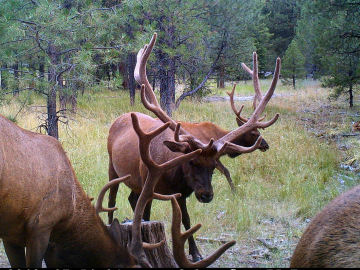
P059-383-256-344-14042
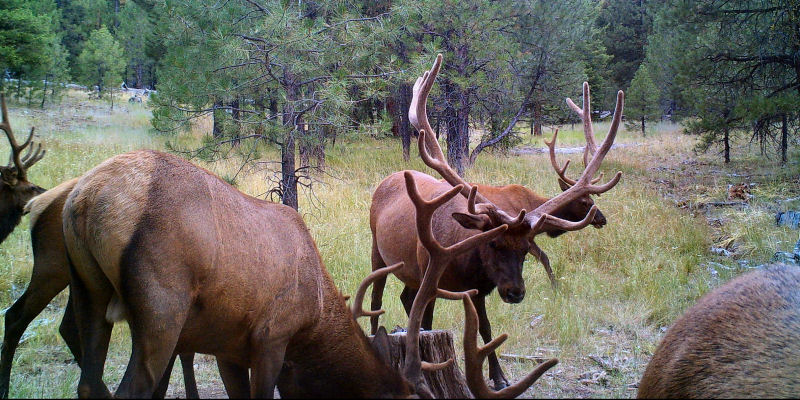
In my opinion, pre-season scouting for elk is a really good excuse for elk hunters to get out into the woods and stretch our legs after a long winter. But are the things you learn really that valuable?
As the winter snows begin to melt and fresh, green grasses begin sprouting up, the elk will follow the receding snow lines – and the food – and move to higher elevations. As summer fades into fall, the elk will move once again, this time for the annual event we so look forward to – the rut. With all of these moves by the elk, is there really any true value in hanging trail cameras and scouting for elk throughout the spring and summer?
Depending on the country you hunt, spring and summer ranges are often completely different for bachelor bulls and calving cows. If you’re able to spend day after day following the elk for several months, you might be able to keep continual tabs on them. In most cases, however, we have a budget for our time and money. My wife would definitely kill me if I spent as much time in the woods as I would like to!
Research
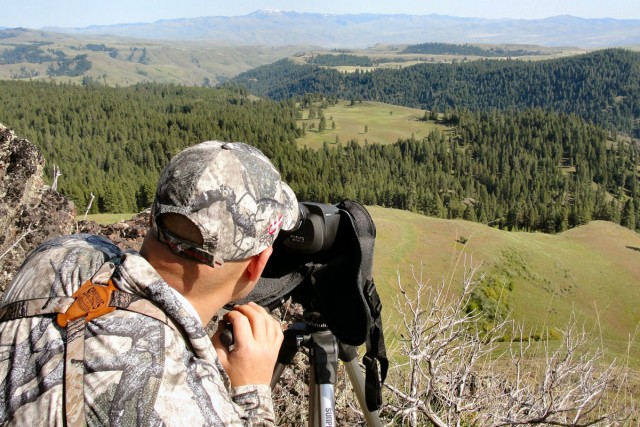 My typical pre-season scouting consists of few key elements that I feel give me an upper hand in the fall. First, I scour Google Earth in search of elk-rich country that holds the key ingredients the elk are going to need: food, water, and cover. If you are hunting an area for the first time, it doesn’t hurt to contact a local biologist to get herd numbers and see what harvest rates and hunting pressure is like in that unit or area as well. This is a definite must if you’re hunting out of state, especially for the first time. Another important factor to think about is whether or not there is private property nearby. My experiences when hunting near large sections of private land is that the elk know where the private land is….they just do! And if the pressure on public land gets to be too much and the adjacent private can support their needs, that’s where they will end up. Finding little pockets of accessible public land nestled amongst large tracts of private land can be great areas to catch elk as they move to and from these safe-havens.
My typical pre-season scouting consists of few key elements that I feel give me an upper hand in the fall. First, I scour Google Earth in search of elk-rich country that holds the key ingredients the elk are going to need: food, water, and cover. If you are hunting an area for the first time, it doesn’t hurt to contact a local biologist to get herd numbers and see what harvest rates and hunting pressure is like in that unit or area as well. This is a definite must if you’re hunting out of state, especially for the first time. Another important factor to think about is whether or not there is private property nearby. My experiences when hunting near large sections of private land is that the elk know where the private land is….they just do! And if the pressure on public land gets to be too much and the adjacent private can support their needs, that’s where they will end up. Finding little pockets of accessible public land nestled amongst large tracts of private land can be great areas to catch elk as they move to and from these safe-havens.
Take A Hike!
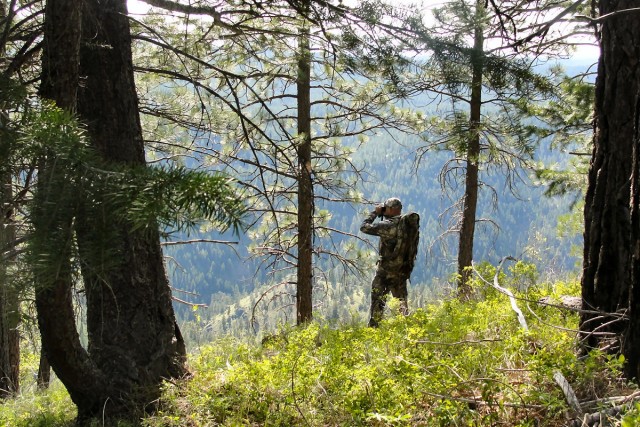 With this research in hand, I then take a hike. Throughout the spring and summer months, I spend time physically looking into some of the areas I’ve researched while shed hunting, bear and turkey hunting, or picking mushrooms. I look for old wallows, trails, and rubs that indicate there has been elk rutting in these areas in previous falls.
With this research in hand, I then take a hike. Throughout the spring and summer months, I spend time physically looking into some of the areas I’ve researched while shed hunting, bear and turkey hunting, or picking mushrooms. I look for old wallows, trails, and rubs that indicate there has been elk rutting in these areas in previous falls.
Just physically finding elk – especially bulls – during the summer is not always going to ensure you will have ample numbers of elk to hunt in the fall. Even in an area where hunting pressure is not generally a factor, most elk seasons coincide with the rut, which is a natural transition period for elk. Often times, bulls that have been patterned and observed during late summer months soon disperse in search of cows. They will sometimes travel several miles and completely vacate the areas they have spent the last several months living in.
Find the Cows
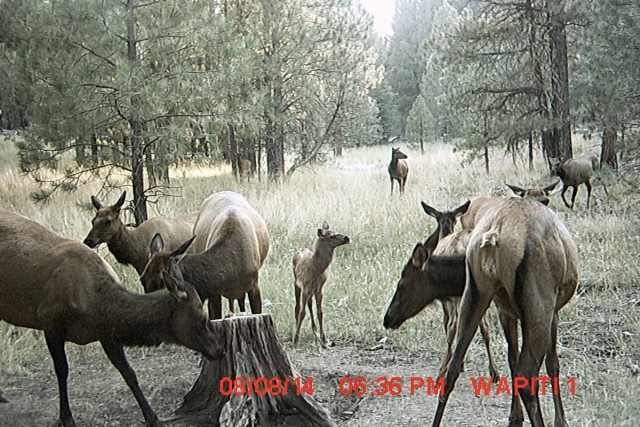
This brings me to one of the most important elk scouting keys I’ve found: when scouting for elk during the summer, find the cows! If you can find an area with a good population of cow elk in July and August, there is an excellent chance that the bulls are going to show up there in September. Think of it as lady’s night at a local club – even though the drink specials are for the girls, the guys always show up!
To help me determine where the bulls are going to end up in September, the last step to my pre-season scouting is hanging trail cameras in the areas I’ve found good sign. You can read more about how I set up trail cameras here: https://www.elk101.com/2015/08/trail-cameras-for-elk/
While seeing the bulls is ultimately what I want, it’s more important for me to find the cows during the summer months. I’d much rather get pictures and videos of large groups of cows on my trail cameras than big bulls. Chances are that the bulls won’t be hanging out in these same areas as the rut approaches.
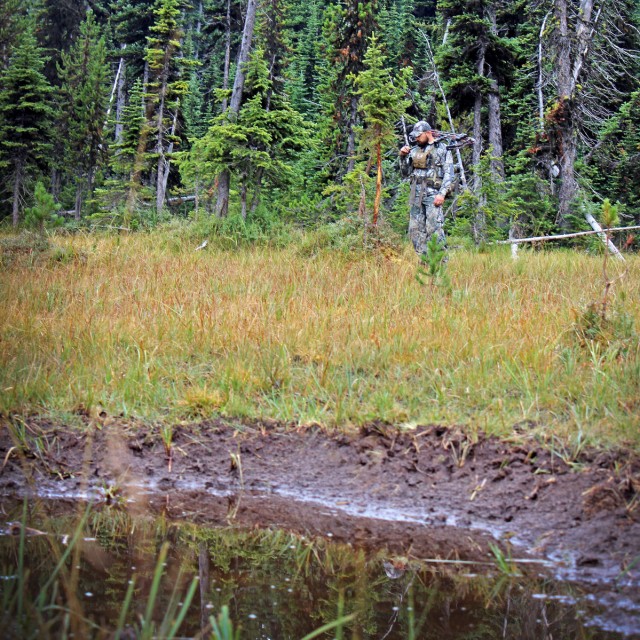 So, this brings me back to my original question. Is pre-season scouting really worth it? If you have the means – time and money – and want to spend time learning the area (i.e. water sources, food and bedding areas, natural escape routes and travel areas), then yes, it will be helpful. If you really want to know the elk are definitely going to be in a particular area during the season, you might be better served to spend the first few months of spring and summer doing homework from home, and save your resources for later on, closer to the hunt.
So, this brings me back to my original question. Is pre-season scouting really worth it? If you have the means – time and money – and want to spend time learning the area (i.e. water sources, food and bedding areas, natural escape routes and travel areas), then yes, it will be helpful. If you really want to know the elk are definitely going to be in a particular area during the season, you might be better served to spend the first few months of spring and summer doing homework from home, and save your resources for later on, closer to the hunt.
One last thing to consider is that you don’t ever want to limit yourself to just one area. Unforeseen pressure, changes in weather or rut activity, or other unpredicted changes can move entire herds of elk long distances. Having multiple options and backup areas is one of the most important things to remember while you are preparing for your hunt.
With some homework and well-timed leg-work, you can narrow down the areas where elk are, and more importantly, where elk will be during the upcoming season. Scout smart and hunt hard, and good luck this fall!

